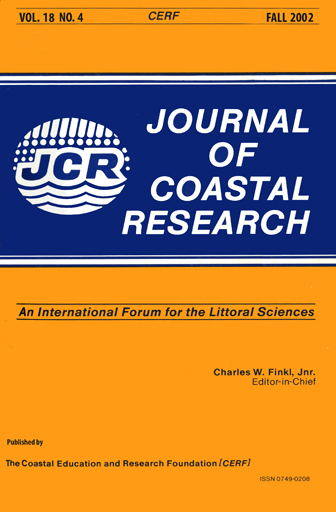Processes Controlling the Remobilization of Surficial Sediment and Formation of Sedimentary Furrows in North-Central Long Island Sound
Keywords:
Long Island Sound, sedimentary furrows, erosional bedforms, sedimentary structuresAbstract
Sidescan sonar, bathymetric, subbottom, and bottom-photographic surveys and sediment sampling have improved our understanding of the processes that control the complex distribution of bottom sediments and benthic habitats in Long Island Sound. Although the deeper (>20 m l waters of the central Sound are long-term depositional areas characterized by relatively weak bottom-current regimes, our data reveal the localized presence of sedimentary furrows. These erosional bedforms occur in fine-grained cohesive sediments (silts and clayey silts), trend east-northeast, are irregularly spaced, and have indistinct troughs with gently sloping walls. The average width and relief of the furrows is 9.2 m and 0.4 m, respectively. The furrows average about 206 m long, but range in length from 30 m to over 1,300 m. Longitudinal ripples, bioturbation, and nutclam shell debris are common within the furrows. Although many of the furrows appear to end by gradually narrowing, some furrows show a "tuning fork" joining pattern. Most of these junctions open toward the east, indicating net westward sediment transport. However, a few junctions open toward the west suggesting that oscillating tidal currents are the dominant mechanism controlling furrow formation. Sedimentary furrows and longitudinal ripples typically form in environments which have recurring, directionally stable, and occasionally strong currents. The elongate geometry and regional bathymetry of Long Island Sound combine to constrain the dominant tidal and storm currents to east-west flow directions and permit the development of these bedforms. Through resuspension due to biological activity and the subsequent development of erosional bedforms, fine-grained cohesive sediment can be remobilized and made available for transport farther westward into the estuary.


